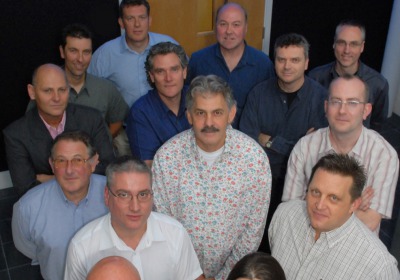Who's Where: Gordon Murray launches own design company
Wed, 11 Jul 2007Famed Formula One designer Gordon Murray has launched his own design company, with its first project currently underway. But it's not quite what you might expect from someone who's made a name for himself building such aerodynamic performers like the McLaren F1 and Camparo T1 supercars. Murray's new project is to build an economical small car for the masses: one that would be both cheap to buy and to run.
Codenamed the Type 25 - following the chassis numbers from Murray's designs that began with the 1966 IGM Ford and culminated in the 2003 Mercedes-Benz SLR McLaren - the new city car is expected to be smaller than an MCC Smart and aims to capture the essence of iconic small cars like the original MINI and Fiat 500, albeit safer. Described as an 'innovative design for a new type of class of personal transport vehicle' the T25 will feature extensive use of lightweight materials in its construction to keep fuel usage emissions low and significantly reduce running costs. The vehicle is said to have an 'innovative architecture' which will facilitate low-cost manufacturing, and will be built in a 'fit for purpose' approach, with a lower parts count for faster assembly.
Realizing that different markets require different vehicles, the T25 is not expected to appeal to all market segments the world over. It will initially be marketed as a base model in the UK, Europe and Japan, but the architecture will allow for several different variants to be produced. Manufacturing partners in worldwide markets are expected be chosen during the two year prototype program.
The company claims that if such a vehicle is adopted by two or more manufacturers 'a quantifiable reduction in fuel usage emissions and road congestion will be achieved within two years of startup'. While this is certainly a lofty claim, a vehicle's size and weight have the largest impact on the environment and prolonged use of smaller and more efficient vehicles could only have a positive impact. And the company is also building the car with the total lifecycle damage in mind, taking into account not only running damage but congestion, parking issues, manufacturing and recycling damage as well.
We're certain that the car's size alone will enable it to ease manoeuvrability and parking woes in urban environments whilst reducing emissions. And with hybrid vehicles nowhere near the claimed manufacturer's efficiency ratings and the fuel cell saviour still a long way from seeing practical application in mass-produced vehicles, it does seem like smaller and lighter is the best immediate solution. We're looking forward to catch a glimpse of the finished product!
Related Article:
Who's Where: Gordon Murray, Advanced Concepts Director, Caparo Vehicle Products
By Eric Gallina

